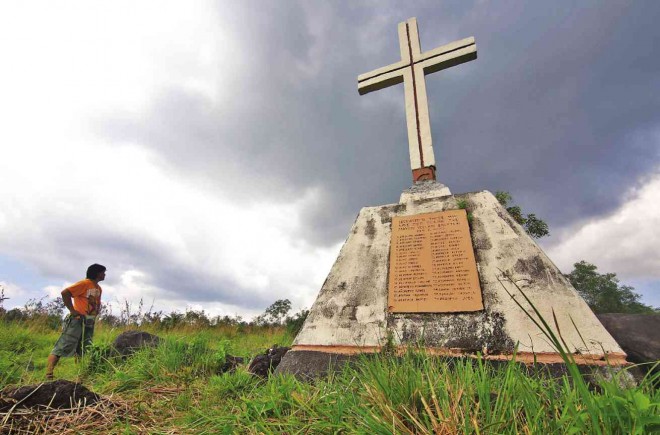
A MARKER dedicated to victims of the Feb. 2, 1993 eruption of Mayon sits inside the 6-km radius danger zone around the volcano in Legazpi City. MARK ALVIC ESPLANA/INQUIRER SOUTHERN LUZON
LEGAZPI CITY, Philippines—The provincial government of Albay is completing more than 300 toilet facilities in shelters for residents moved out of Mayon’s way so the evacuees would have no reason to return to their homes that are inside danger zones around the volcano.
Albay Gov. Joey Salceda said toilets and bathrooms in evacuation sites seemed to be the main needs of evacuees who have been staying in shelters since the alert level over Mayon was raised to 3 on Sept. 15.
He said more water filtration machines would be deployed to the shelters to ensure safe drinking water for the 32,000 children evacuees.
“Once we complete the 327 toilets we will close the danger zones totally,” said Salceda.
No water, electricity
He said there would be “no electricity, no water, to make sure there will be no more human activity” in the danger zones.
The provincial government evacuated 54,537 people from communities in the six-kilometer radius permanent danger zone and a six-to-eight-km extended danger zone since Sept. 15.
Eduardo Laguerta, resident volcanologist of the Philippine Institute of Volcanology and Seismology (Phivolcs) here, had noted rapid changes in Mayon’s recent activities that were similar to the volcano’s Dec. 14, 2009 eruption.
He cited the “drop in gas output that jives with the rapid deformation,” or swelling of the volcano, which show a buildup of pressure inside the volcano as magma continues to move upward in a sign of a major eruption.
Phivolcs said monitors recorded only 148 tons of sulfur dioxide emitted by Mayon on Oct. 5 compared with 308 tons that the volcano emitted on Oct. 2.
Volcanologists also said they recorded an inflation of the volcano’s surface by at least 3 mm, which meant that the amount of magma inside Mayon, estimated to be 2 million cubic meters (equivalent to 80,000 truckloads) are still in its magma chamber.
The Phivolcs recorded three volcanic earthquakes and two rock fall events in Mayon on Tuesday.